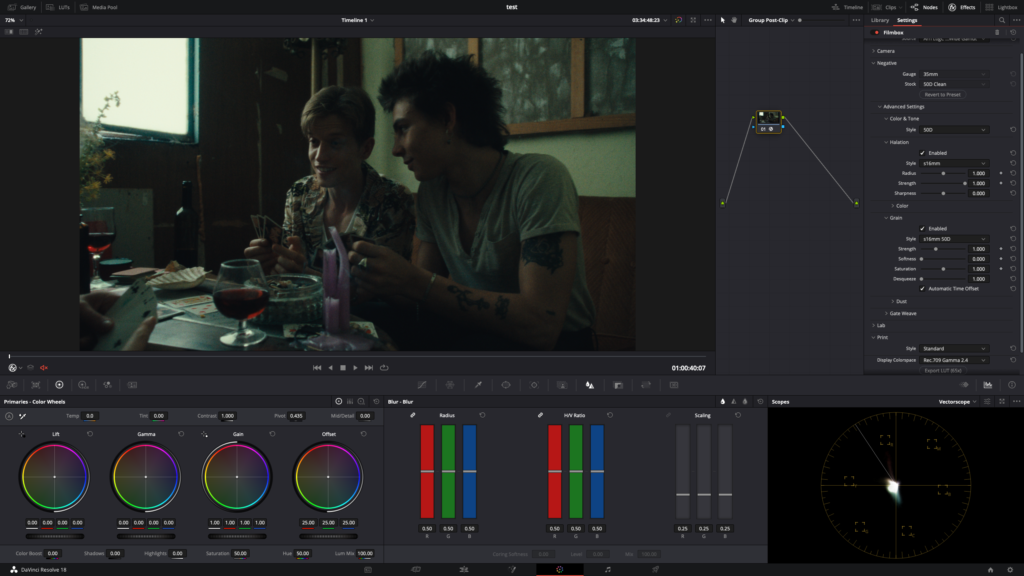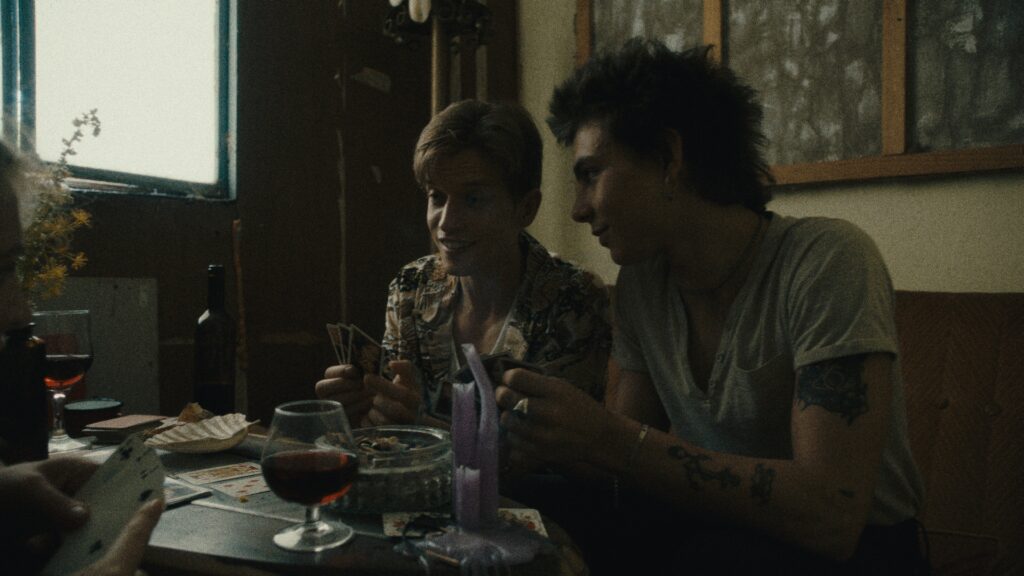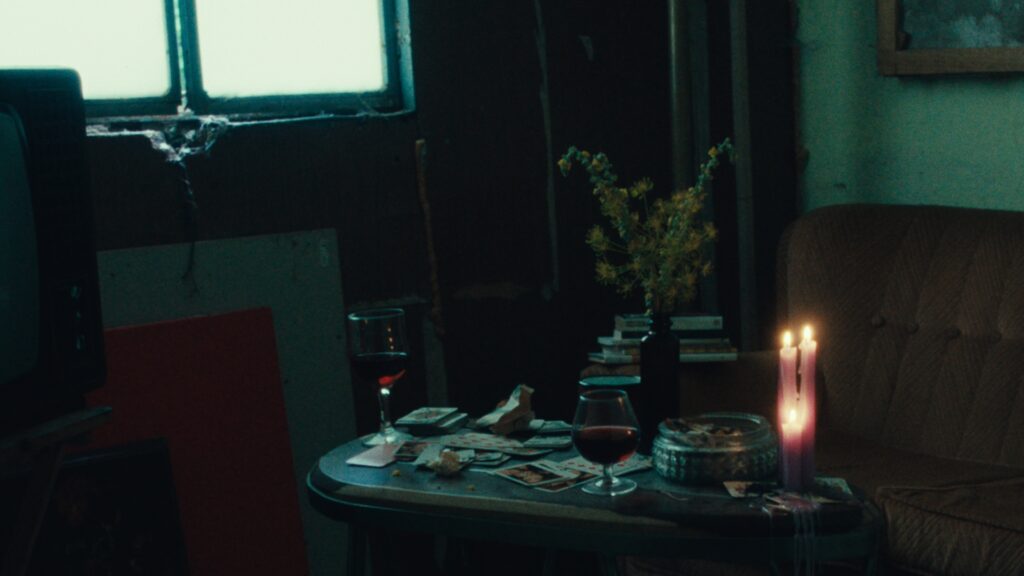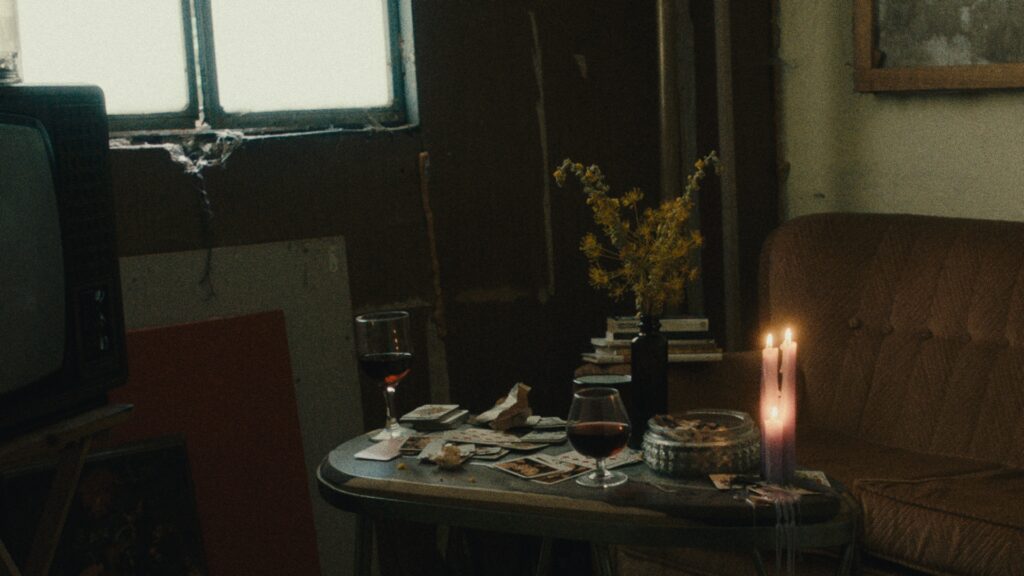Hi fellow filmmakers, in this one, were doing, Dehancer vs Filmbox: Best Film Emulation Davinci Resolve. As a filmmaker in the digital era, I’m always looking for ways to bring the charm and texture of classic celluloid film into my work. Film emulation has become a vital part of my post-production process, as it allows me to merge the convenience of digital technology with the timeless aesthetic of analog film. By replicating the characteristics of various film stocks, I can create specific moods, enhance my storytelling, and give my projects a distinctive, cinematic quality.
Overview of Dehancer and Filmbox as popular film emulation plugins for DaVinci Resolve
In my search for the perfect color grading and post-production software, I’ve found DaVinci Resolve to be an invaluable tool. It offers a comprehensive suite of features that help filmmakers like me shape our visual narratives.
Among the many third-party plugins available for DaVinci Resolve, two film emulation plugins have caught my attention for their authenticity and adaptability: Dehancer and Filmbox. Both plugins are designed to deliver realistic film emulation within DaVinci Resolve, providing users like me with a range of tools to recreate the look of various film stocks, apply grain, and control other filmic attributes. In this article, I will explore the features, pros, and cons of both Dehancer and Filmbox, guiding you towards the best choice for your film emulation needs.
Dehancer Vs Filmbox

Dehancer is a third-party plugin designed to create film-like color grades and film effects in popular editing software such as DaVinci Resolve, Final Cut, After Effects, and Premiere Pro. The development of Dehancer began with the goal of providing color grade artists and filmmakers of all levels with an easy-to-use tool that could deliver organic, natural, and realistic film emulation.
Filmbox is a software tool that has been designed to emulate the characteristics of photochemical imaging. While digital imaging offers enormous freedom and a vast range of parameters that can be controlled to define its characteristics, photochemical imaging is an end-to-end system that both records and displays the image. As a result, the characteristics of film are carefully honed over time and are defined by the system itself.
Filmbox aims to bridge the gap between cinema cameras and digital displays by functioning as a format with defined characteristics and simple parameters for modulating those characteristics. The software tool is intended to be used as an extension of the camera, not just as a generic post effect. This means that DPs and Directors can use Filmbox to create specific and intentional images by pushing and pulling against its predetermined characteristics.

One of the key benefits of using Filmbox is that it offers a deterministic and carefully selected set of characteristics that can be used to make photographic decisions on set. This can help filmmakers to create intentional images that push and pull against the defined characteristics of the system.
Filmbox Vs Dehancer: Color Managed Workflow
Both Filmbox and Dehancer are powerful plugins that offer support for various camera color spaces such as ARRI Log C, S-Log3, and almost all the camera color spaces as input transform. They both also support color management systems like DaVinci Wide Gamut and ACES.
However, there is a difference in how they handle color management. Filmbox can be used as a complete color management system with a node-based pipeline. This allows for a more flexible and customizable approach, particularly for scene-referred workflows. Additionally, Filmbox supports HDR deliveries, which makes it a versatile tool for a range of projects.
On the other hand, while Dehancer also supports various color spaces, it relies on the camera color space and DaVinci Resolve’s own color management system, which is set in project settings. This means that Dehancer is not as flexible as Filmbox when it comes to setting up a custom color pipeline.
In summary, both plugins offer robust support for camera color spaces and color management systems. The main difference is that Filmbox offers a more flexible and customizable node-based pipeline, while Dehancer relies on the camera color space and DaVinci Resolve’s color management system.
Filmbox Vs Dehancer: Film Profiles
When it comes to film profiles, both Filmbox and Dehancer offer a range of options to emulate the look of different film stocks. However, there are some differences in how they approach this. Filmbox has a smaller selection of film profiles, with a focus on accurately measuring the film data of four Kodak Vision 3 motion picture film stocks: 250D, 500T, 200T, and 50D. While Filmbox aims to reproduce the characteristics of these films faithfully, it also acknowledges that the concept of “film look” can vary depending on factors like post-processing and photochemical processes.


On the other hand, Dehancer has a vast library of film profiles that includes photographic film profiles and motion picture film stocks, as well as color negative, color positive, black and white, instant films, and even exotic films. Each film is accurately sampled with all of its characteristics. If you have a preferred film stock in mind, you can simply scroll through Dehancer’s list of film profiles until you find the one that best suits your needs.
That being said, when it comes to color rendition, many users have reported that the results produced by Filmbox are particularly pleasing. The software’s approach to film emulation involves a combination of accurate film data measurement and subjective tuning to produce creatively satisfying results. While Filmbox’s selection of film profiles may be smaller than Dehancer’s, the quality of its output may make it a better choice for those looking for a specific film look. Ultimately, both plugins offer a range of options for film emulation, and it may come down to personal preference when choosing between them.
Filmbox Vs Dehancer: Print Film Emulation
Filmbox and Dehancer offer different print film emulation options. Filmbox’s print module simulates projecting a contact print of the negative in the selected display colorspace. It offers a “Tone Curve” parameter and a “Greyscale Neutrality” parameter that modify the print transform, allowing the user to choose how “filmic” the tone curve is and how color neutral the grey-axis is. Filmbox has three presets based on those two parameters, which can be directly manipulated by selecting Custom.
On the other hand, Dehancer offers print medium options including Linear, Cineon Film Log, Kodak 2383 Print Film, Fujifilm 3513 Print Film, and Kodak Endura Glossy Paper. However, while Dehancer has Kodak and Fujifilm print options and Kodak motion picture stocks, they are printed and measured in a way that is different from traditional movie film printing. When it comes to movie films, printing them on photographic paper isn’t technically incorrect, but it may produce less accurate results than classic film printing methods.
While both plugins offer print film emulation, Filmbox’s approach is focused on simulating a contact print, while Dehancer offers a range of print mediums and settings based on their experience in optical printing. Both produce some very pleasing results.
Certainly, it’s important to keep in mind that everyone has their own perception of what a “film look” actually is, and both Filmbox and Dehancer are simply tools for look development. What one person might consider to be an accurate film emulation could be completely different from someone else’s perception. It’s also worth noting that these tools are not necessarily intended to be a replacement for shooting on actual film, but rather a way to achieve a similar aesthetic using digital cameras.

Filmbox Vs Dehancer: Grain
It’s worth noting that both Filmbox and Dehancer offer grain emulation tools, but Dehancer’s approach is particularly noteworthy. Rather than simply overlaying grain on top of an image, Dehancer reconstructs the shot using local color and brightness characteristics and a complex physical modeling of a film emulsion. As a result, Dehancer produces more lifelike and accurate grain emulation.
In terms of specific features, Filmbox offers a range of parameters for adjusting grain intensity, softness, saturation, and desqueeze, among other things. The software includes various presets for different gauges and stocks, and users can adjust the strength of grain relative to the current preset.
Dehancer, on the other hand, offers two film types and two processing modes. Users can adjust grain size, amount, and chroma, as well as control grain distribution between different tonal ranges. There’s also a film resolution parameter that allows users to mimic a specific emulsion resolution or compensate for excessive image softness.
It’s important to note that everyone has their own perception of what constitutes the “film look,” and these tools are simply look development tools. That said, Dehancer’s more sophisticated approach to grain emulation may produce more satisfying results for some users.
Filmbox Vs Dehancer: Halation
Both Filmbox and Dehancer offer options for emulating halation, an effect produced by the diffusion of light within layers of color emulsion in film that results in amber-biased halos visible especially in highlights and high-contrast image features.
Filmbox allows users to fine-tune the size of the halation and adjust its strength, sharpness, and color saturation and RGB balance. The size of the halation falloff is also a function of the size of the film plane, and users can select the gauge they want to simulate. Halation produced by Filmbox is often considered to look more realistic and appealing.
In Dehancer, halation is produced through a complex physical modeling of a film emulsion that considers factors such as the minimum light source brightness that is able to produce halation, the range of background tones on which halation becomes visible, and the distribution of the halation effect between large and small sources. Other parameters include local diffusion, global diffusion, amplify, hue, and blue compensation. The impact parameter controls the overall transparency of the effect, while the mask mode enables a special preview mode for better control.

Comparing other features
Both Filmbox and Dehancer offer a range of unique features for achieving the look of film. Filmbox offers Gate Weave, which reproduces subtle misalignment between frames at the time of exposure. It also has a Push/Pull Process, which simulates under or overexposing the negative and changing the spatial and photometric characteristics of the image. In addition, Filmbox has a Split Tone feature, which skews the color balance in shadows and highlights to produce split-tone looks.
On the other hand, Dehancer offers a Bloom effect, which emulates the combined effect of light dispersion on the boundaries of contrasting image areas. It also has a CMY Color Head and Print Toning tool that simulates the subtractive color correction used in photo enlargers and optical movie printing. Dehancer also offers a Film Breath tool that mimics the accidental change in exposure, contrast, and color from frame to frame, as the film moves.
Pricing
When it comes to pricing, Filmbox and Dehancer offer different options. Filmbox offers three pricing plans: Indie Quarterly for $129 every 3 months, Indie Yearly for $349 annually, and Indie Perpetual for a one-time payment of $999. Filmbox is relatively more expensive, on the other hand, Dehancer Pro has a one-time price of $399, which allows installation on two devices with one purchase. It’s worth noting that Filmbox doesn’t offer a monthly plan, so users must commit to at least three months of service. Ultimately, the choice between these two options will depend on individual needs and budget.
Conclusion
In conclusion, both Filmbox and Dehancer are powerful film emulation plugins that offer a range of features and tools for recreating the look and feel of analog film within DaVinci Resolve. While Filmbox offers a more limited selection of film profiles, it excels in creating an authentic film look that many users find satisfying. On the other hand, Dehancer offers a vast library of film profiles, and its sophisticated approach to grain emulation and halation produces lifelike and accurate results.
When it comes to pricing, Filmbox is relatively more expensive, but it offers a perpetual license option, while Dehancer has a more affordable one-time purchase option. Ultimately, the choice between these two options will depend on personal preference, specific project needs, and budget. Regardless of which plugin you choose, film emulation can be a powerful tool for enhancing the storytelling and visual impact of your projects in the digital era.





